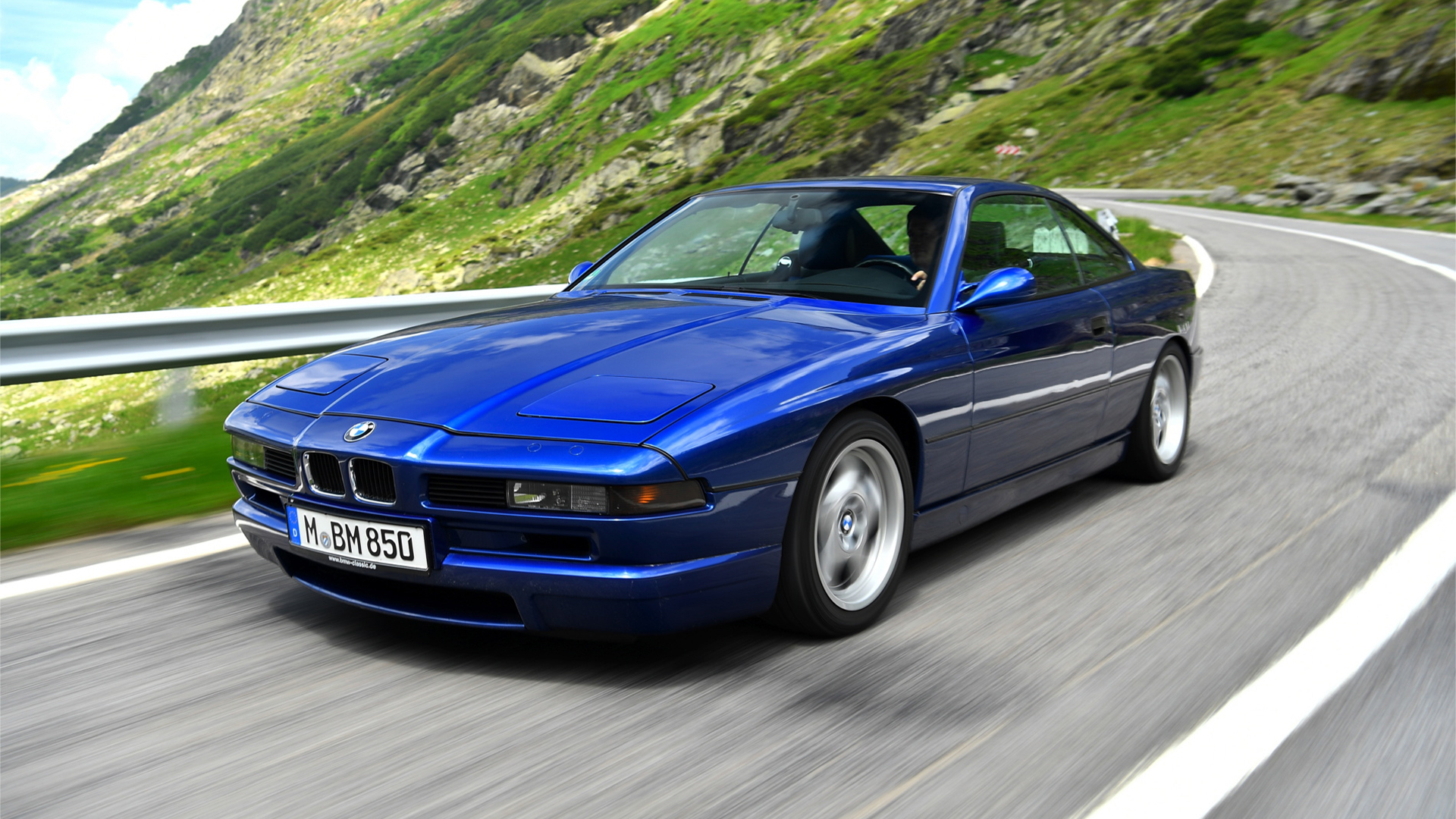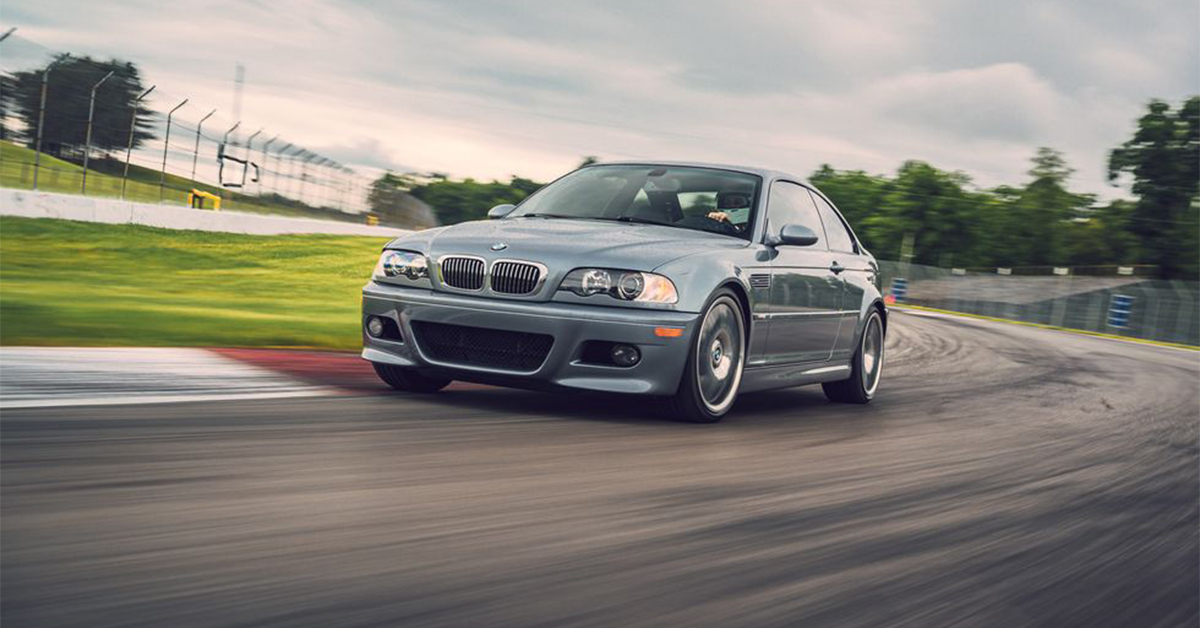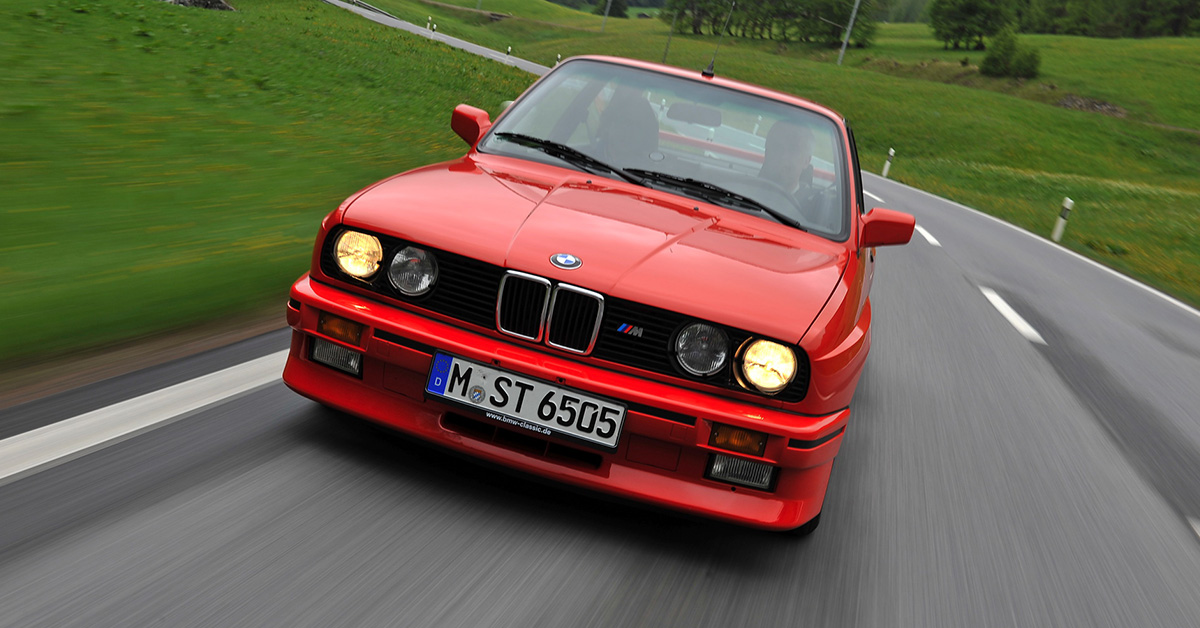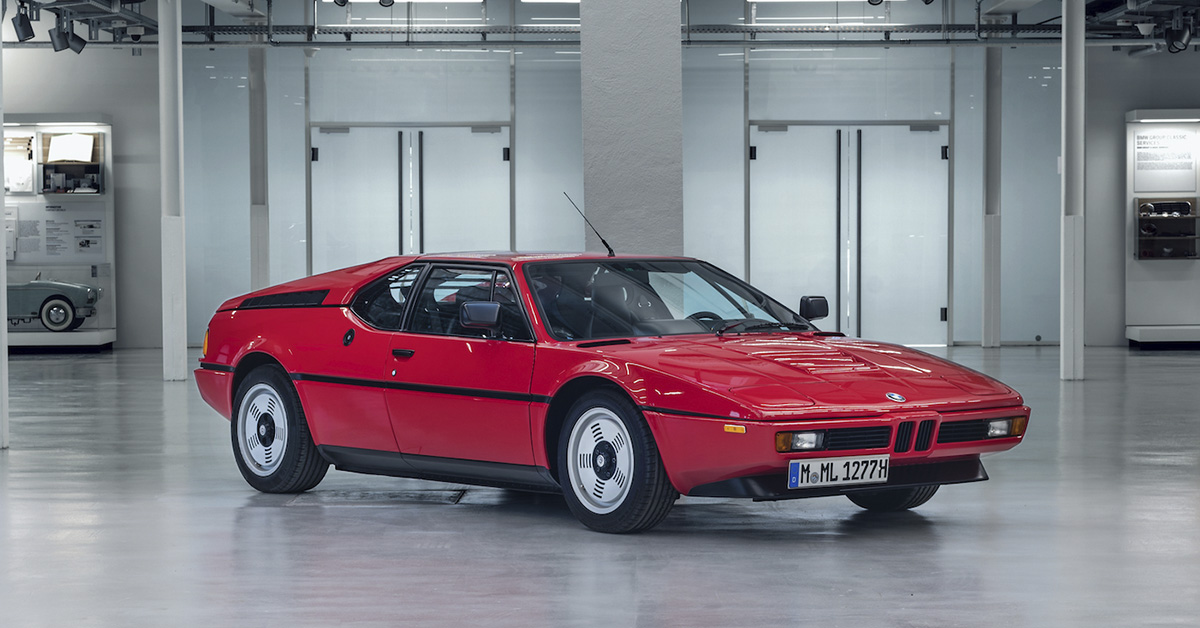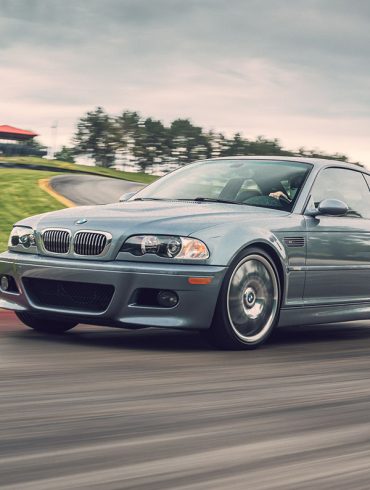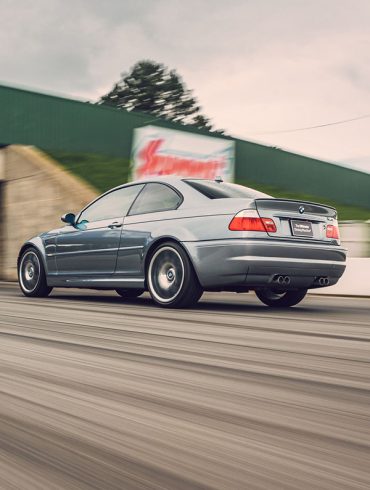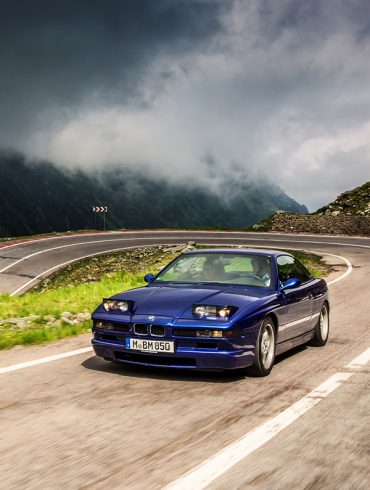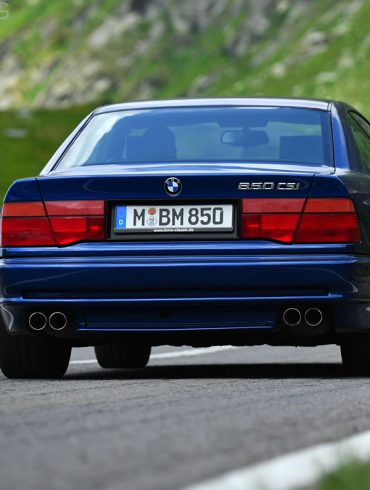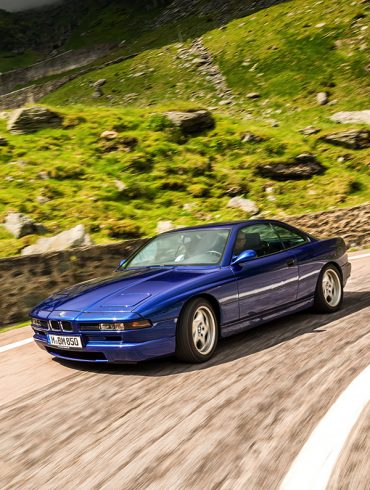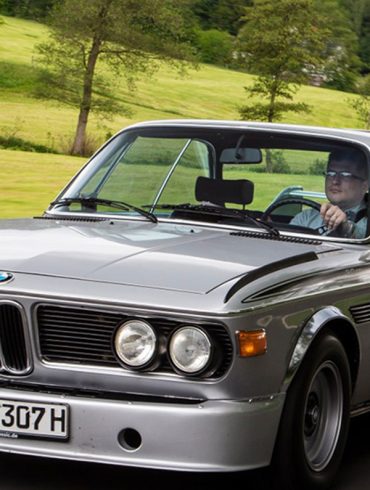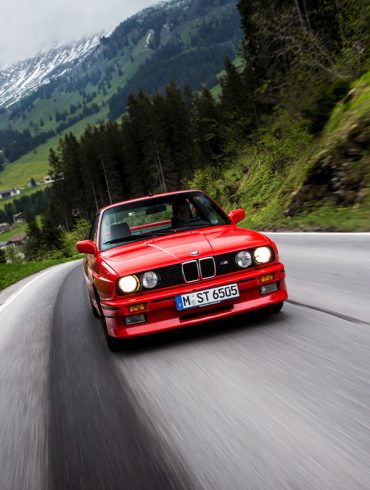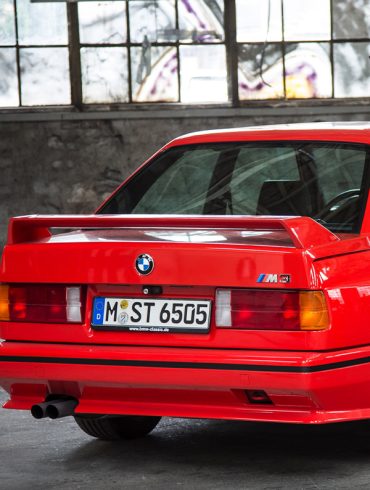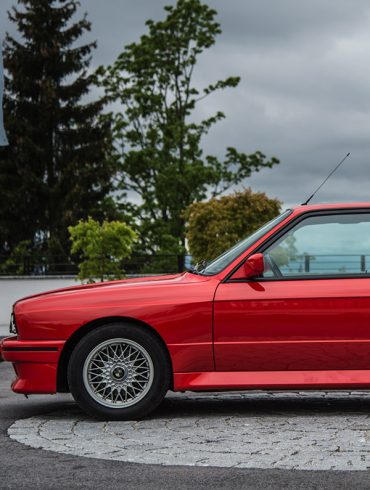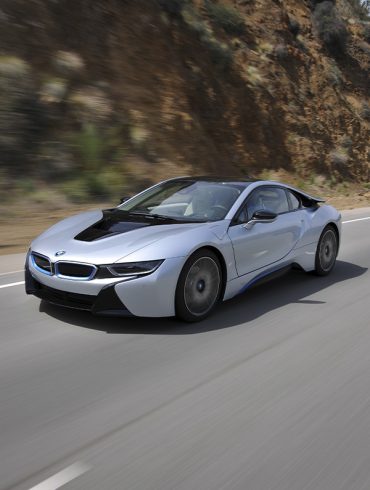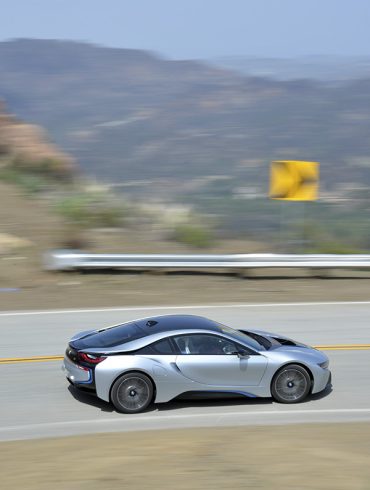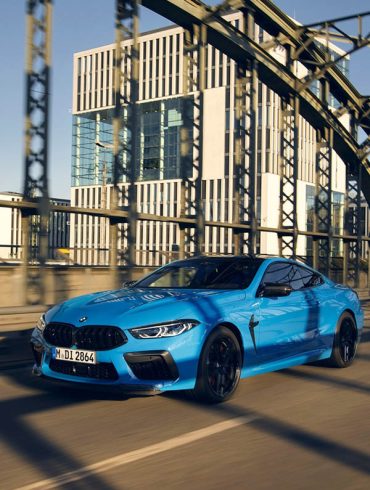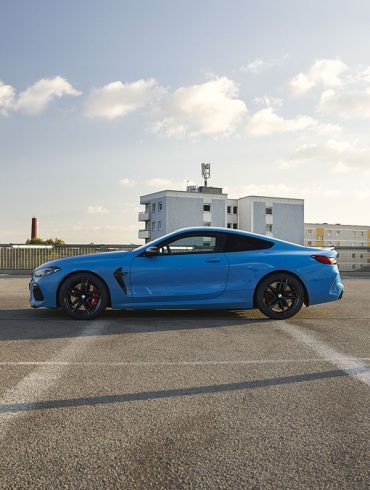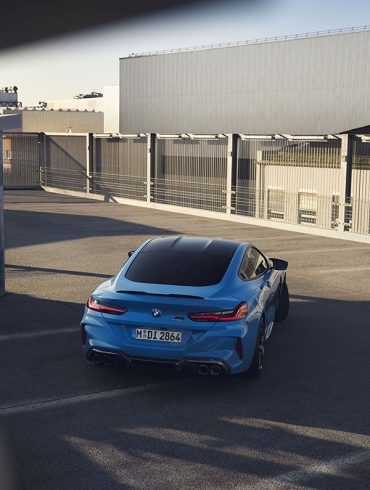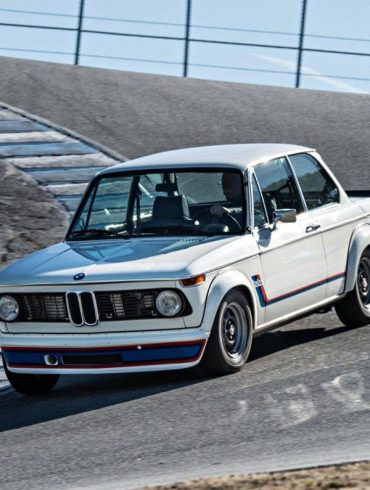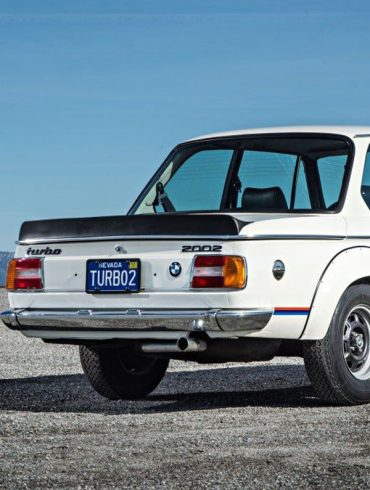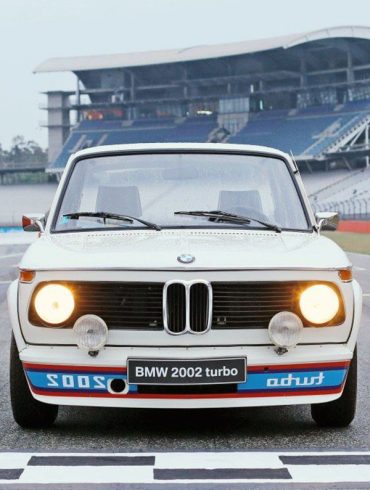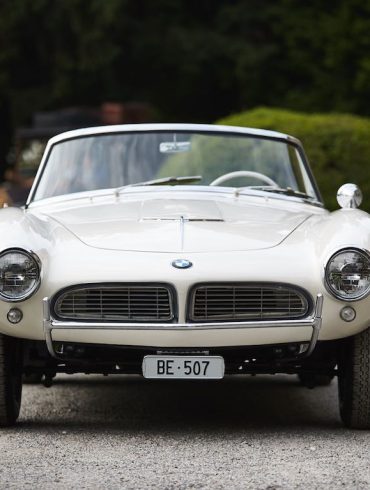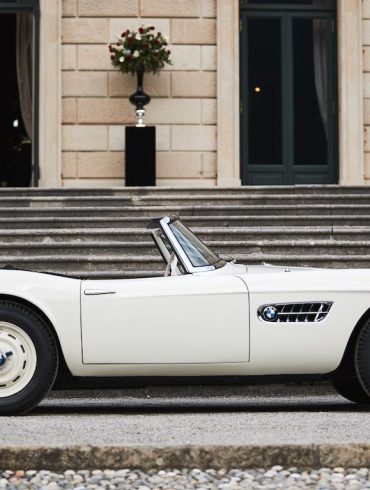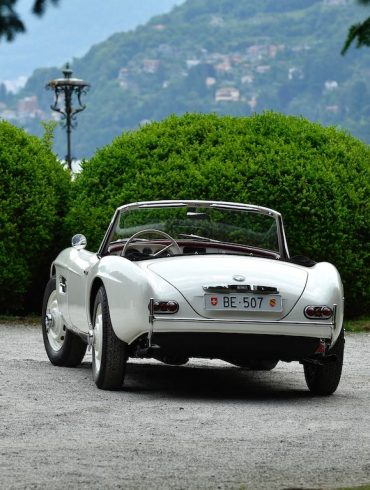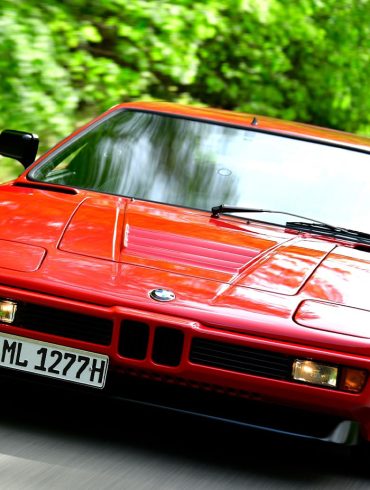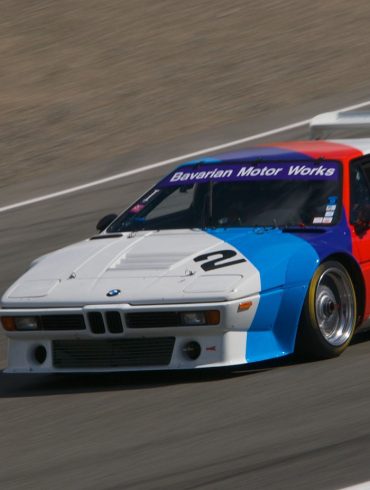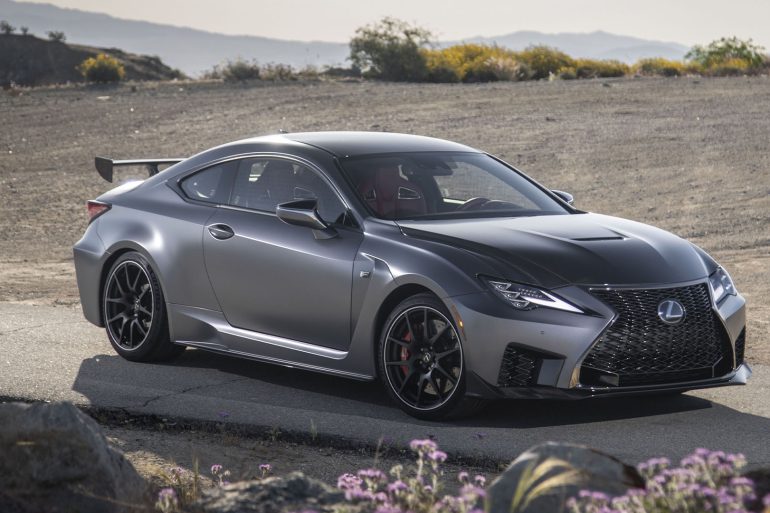About Our Selections
When it comes to cars that are the epitome of sleekness and sportiness, BMW, without a doubt, tops the list. Drivers who enjoy the look and feel of something powerful on the road admire BMW cars. Their sturdy architecture features strong engines capable of high speeds while keeping every bit under control. Any BMW enthusiast would agree that cruising in BMW sports cars is thrilling and pleasant while enjoying an excellent view from behind the wheel.
The BMW company has been around for some time, producing some iconic sports cars. So, their position as one of the most recognizable automaker brands globally is certainly well-deserved. BMW leads the way in precision steering, rapid handling, and powerful acceleration. Notably, BMW vehicles have advanced technology features designed to take sports driving to another level.
Today we're looking at the best BMW sports cars ever produced, ranging from modern-age models to some of their most acclaimed classics.
The Most Notable & Desirable BMW Cars Ever Made
We selected these vehicles for our collection based on their esteemed status among collectors, intrinsic value, or significant influence on the automotive industry.
BMW M3 E46
Timeless design and a driver-focused experience set it apart
What Makes It Special
It's a bold assertion, but we have yet to come across a more remarkable confluence of traditional style and contemporary performance than the third-generation M3, also known as the E46. The M3 E46, which debuted in 1999, took its cues from the E36 model of the previous generation but made significant advancements in power, performance, and technology.
With its separate throttle bodies and considerable improvements, the 3.2-liter S54 engine (tilted 30 degrees to fit) was a masterpiece of high-revving, naturally aspirated engineering. The engine drove the rear wheels through a second-generation SMG automated manual transmission or an innovative variable M differential. Total output reached 343 horsepower and 270 lb-ft of torque.
The E46 maintains a straightforward demeanor while adding enough visual muscle to stand out as something exceptional. This is accomplished by adding a slight 20-mm flare to the wheel arches, a discrete power bulge in the aluminum bonnet, and four stubby exhausts beneath the rear bumper. And the appeal of this combo has remained strong in the past twenty years since it first appeared.
Engine & Drivetrain Specifications
Engine: 3.2L Straight-Six
Power: 343 hp
Torque: 270 ft-lbs @ 4,900 rpm
Transmission: 6-speed / SMG (automated manual)
Accomplishments, History, & Racing Achievements
The BMW M3 GTR Race edition achieved motorsport success when it debuted in the American Le Mans Series (ALMS) competition in 2001, producing championship victories for BMW Motorsport across the driver, constructor, and team categories.
This machine has since competed in various prestigious events, including the 24-hour races at the Nürburgring and Spa-Francorchamps. Two double victories showcased its incredible capabilities at the Nürburgring Classic in 2004 and 2005.
Resources & Owner's Communities
BMW 850 CSi
Its mighty V12 and luxurious features make it the dream coupe
What Makes It Special
In the 1990s, BMW realized that the imminent globalization of the automobile industry required a fresh approach to remain competitive with its rival brands, specifically its long-time rival, Mercedes-Benz. As such, it set out to revamp its acclaimed 850i/Ci by commissioning BMW Motorsport to produce an even more powerful variant.
On paper, BMW engineers had done everything to restore the honor lost in their first installment of the 8 Series. Then there's the monstrous V12 with two valves per cylinder and very advanced engine management with electronic injection from Bosch Motronic. For the CSi, the engine underwent a steroid treatment from a 5.0-liter to almost 5.6 liters, reaching a not-too-shabby 380 horsepower and 406 lb-ft of torque.
The 850 CSi could go from 0 to 60 mph in 6 seconds, while the top speed was limited to 155 mph. Another subtle detail that hinted at the intentions of the 850 CSi was the fact that this model was only offered with a 6-speed manual gearbox, so there were no concessions for conformist drivers.
Engine & Drivetrain Specifications
Engine: 5.6L V12
Power: 380 hp
Torque: 406 ft-lbs @ 5,300 rpm
Transmission: 6-speed manual / 5-peed auto
Accomplishments, History, & Racing Achievements
The BMW E31, often known as the 850 CSi, was the top-of-the-line model of the BMW 8 Series replacing the BMW E31 6 Series-based E24. The 8 Series was the first BMW Grand Tourer to debut a V8 and V12.
Its unprecedented performance undoubtedly sets the CSi apart from other models with its Motorsport-derived S70 V12 engine. It outgunned worthy contenders such as the Aston Martin DB7 and Porsche GTS.
Resources & Owner's Communities
BMW 3.0 CSL
Lightweight, aerodynamic, and with a racing pedigree
What Makes It Special
Built over four decades ago as a special homologation for the European Touring Car Championship, many still consider the CSL a significant icon within the auto industry today, thanks notably to its impressively lightweight and marvelous three-liter engine.
What makes this car truly phenomenal? One can hardly ignore its outstanding attributes, like its astonishingly lightweight construction and aggressive aerodynamic features, which provide stability at mind-boggling speeds. The elongated body design and striking spoilers earned it one of the most iconic nicknames—Batmobile—across racing circuits worldwide, capturing hearts instantly with immense popularity remaining intact over four decades later.
The CSL had a Bosch fuel injection system that produced 206 horsepower. In addition, a six-cylinder engine was set as the standard across all E9 series innovations. In 1973, displacement increased from the initial 2,985 cm3 offering to its maximum size of 3,153 cm3. Known for exceptional manual transmission performance, the highest recorded speed attained while accelerating in fourth gear clocked in at an impressive 137 mph.
Engine & Drivetrain Specifications
Engine: 3.0L Straight-Six
Power: 206 hp
Torque: 201 ft-lbs @ 5,600 rpm
Transmission: 4-speed manual
Accomplishments, History, & Racing Achievements
The BMW 3.0 CSL boasts an extraordinary track record, having clinched six European Touring Car Championships and countless class victories at high-profile endurance races like Le Mans.
In October 1970, BMW assigned Alpina to develop the lightweight coupe based on the 2800 CS. The result is the mythical 3.0 CSL. Alpina engineers incorporated 20 modifications, and instead of the original goal of lightening the car by 130 kg, they managed to shave 215 kg from the overall weight.
Resources & Owner's Communities
The Best Performing BMW Cars Ever Made
With their relentless pursuit of innovation and ability to consistently push performance boundaries, these iconic BMW cars have left an indelible mark on the road and the track.
BMW M3 E30
Compact, powerful, and thriving on the racetrack
What Makes It Special
Among many enthusiasts, there is no debate about the unmatched appeal of the first-ever M3 vehicle designed exclusively for Group A homologation purposes. Regarding technical superiority and performance standards, its engineering justifies its legendary reputation.
Introduced in 1986 with the revolutionary 'S14,' a compact yet hardy four-cylinder powerplant boasting shared construction parts from an M10 block combined with a four-valve head transplanted from the S38 straight-six of an M5,
The engine pairs with a dogleg five-speed manual gearbox, providing an output of 200 horsepower and 176 lb-ft of torque in early models, progressing up to 215 horses in Cecotto and Ravaglia specialty editions.
In contrast, the final SportEvolution variant offers a maximum power output of 238 hp thanks to the enhanced displacement of up to 2.5 liters and other mechanical changes implemented by BMW's engineers. The car can speed from a standstill to 60mph in 6.7 seconds, while its top speed is 140mph.
Engine & Drivetrain Specifications
Engine: 2.5L Twin Cam 16V Inline-Four
Power: 200 hp
Torque: 177 ft-lbs @ 4,600 rpm
Transmission: 5-speed manual
Accomplishments, History, & Racing Achievements
The initial M3 E30 variant underwent significant modifications, unlike any other M3, improving its aerodynamics and maneuverability and contributing to one of motor racing's most successful runs.
The M3 E30 reigned in touring car racing, securing multiple championship victories, including those within the DTM (Deutsche Tourenwagen Masters) and winning the 24 Hours of Nürburgring and Spa.
Resources & Owner's Communities
BMW i8
The trailblazer of eco-friendly supercars
What Makes It Special
Discovering the BMW i8 is a journey no car fanatic should miss. While not quite meeting the legendary expectations some have set after experiencing the ultimate driving machines of generations past, the i8’s power plant system is undeniably impressive, utilizing advanced technological features that display seamless integration systems.
The hybrid powertrain comprised a turbocharged 1.5-liter inline three-cylinder engine with a hybrid synchronous motor and lithium-ion battery pack, producing over 369 hp and beyond 420 lb-ft of torque.
While it may lack the appeal of soulful thrumming engines longed for by enthusiasts worldwide or lose some grip on corners due to narrow tires, driving the i8 is an exciting experience thanks to its impressively executed body balance control.
Plowing ahead through all-wheel drive plug-in hybrid technology, this supercar features a six-speed automatic transmission for the rear wheels and a two-speed automatic transmission for front traction. The i8 can accelerate from 0 to 60 mph in just 3.8 seconds and reach 100 mph in 9.7 seconds.
Engine & Drivetrain Specifications
Engine: 1.5L Turbocharged Inline-Three / Hybrid synchronous motor
Power: 369 hp
Torque: 420 ft-lbs @ 3,700 rpm
Transmission: 6-speed automatic
Accomplishments, History, & Racing Achievements
The BMW i8 fulfilled the brand's ambition for sustainable mobility and forward-looking design solutions. As a plug-in hybrid sports car, it exemplified how high-performance driving can blend seamlessly with cutting-edge innovation that is eco-friendly too.
Standing front-and-center for all i-branded cars from BMW, the i8 boasted revolutionary characteristics such as butterfly doors, lightweight construction, and modern materials paired with a refined powertrain.
Resources & Owner's Communities
BMW M8 Competition
Outstanding performance, captivating luxury, and confident stand
What Makes It Special
Lauding BMW's vehicles that carry the esteemed M branding can frequently be heard as a hallmark of automotive enthusiasm in many circles. These high-octane models hail from none other than BMW Motorsport itself and are considered by many enthusiasts to be some of their most exciting offerings.
But, of course, within their latest M lineup cars (many of which are currently SUV-focused), there remains one model known for sitting atop this prestigious bunch—enter the BMW M8 Competition.
Boasting superior levels of raw power over any other car in its class and a higher price tag compared to similar models, the BMW M8 Competition lends itself generously to being dubbed a true beacon of excellence among its peers.
The M8 Competition now sports a 4.4-liter V8 TwinPower Turbo engine that harbors a monumental total output of 625 horsepower alongside awe-inspiring torque capabilities of 553 lb-ft. In earlier versions, an alternative engine option offered marginally less equipment and maxed out at producing only 600 hp
Engine & Drivetrain Specifications
Engine: 4.4L Twin Turbo V8
Power: 617 hp
Torque: 553 ft-lbs @ 1,800 rpm
Transmission: 8-speed automatic
Accomplishments, History, & Racing Achievements
Initially designed as a top-of-the-line variant of BMW's 8 Series in the late 1980s, this dream took shape in what would be called the "M8". However, the project was put on hold until 2019, when BMW brought back the M8 badge that shook up car enthusiasts worldwide via their Grand Tourer.
Equipped with a twin-turbo V8 engine producing impressive horsepower and packed with luxury features, the M8 Competition is an excellent example of what BMW Motorsport is about. It has incredible performance, luxurious comfort, and a thrilling ride.
Resources & Owner's Communities
The Best-Looking BMW Cars Ever Made
The design philosophy of BMW embodies an amalgamation of refinement and athleticism with its harmonious aesthetics, instantly recognizable kidney-shaped grilles, and sleek lines.
1973 BMW 2002 Turbo
BMW's first mass-produced turbocharged car was groundbreaking
What Makes It Special
Around fifty years ago, as oil prices surged, automotive engineering firm BMW unveiled its sporty new vehicle, the BMW 2002 Turbo, to much public acclaim. While most believed such a fast car would take a backseat amid concerns about rising fuel consumption, the 2002 was a success for BMW.
Nonetheless, what followed took all by surprise as the BMW 2002 Turbo revolutionized exhaust turbocharger technology and set a new era of sports car design in motion. Featuring an M10 inline engine with a 2.0-liter displacement, the 2002 Ti (1968–1972) churned out up to 120 horsepower. Meanwhile, later models, such as the 2002 Tii (1971–1975), provided even more power: up to 130 hp with Kugelfischer intake manifold fuel injection.
However, it was the Kühnle Kopp und Kausch turbocharger—known in abbreviated form as "KKK"—that delivered an unprecedented surge in horsepower and torque, bringing total output to a staggering 170 hp and 240 Nm. Indeed, few would have predicted that this car could emerge as such a force within its industry, let alone become a leader for future combustion engine models. Yet more than four decades later, we can see how BMW foretold future developments through its astute engineering prowess.
Engine & Drivetrain Specifications
Engine: 2.0L Turbocharged inline-Four
Power: 170 hp
Torque: 177 ft-lbs @ 4,000 rpm
Transmission: 4-speed manual
Accomplishments, History, & Racing Achievements
With acclaimed drivers Hans-Joachim Stuck and Dieter Quester behind its wheel, the 2002 Turbo emerged victorious at European Touring Car Championship(ETCC)and German Touring Car Championship(DTM) in 1973.
The 2002 Turbo secured more victories, such as ETTC titles in 1974 and 1975, impressive wins in Spa Hour Endurance Race in 1974, and British Touring Cars in 1975.
Resources & Owner's Communities
1955 BMW 507
Automotive beauty that captures a timeless aesthetic with its elegant and sporty design
What Makes It Special
A car that has earned itself a lasting place in automotive history is the classic roadster known as the BMW 507. This stunning beauty debuted in 1956 and remains popular due to its rare elegance. Every line of this car accentuates its design.
From every sweeping curve on that perfectly proportioned body down to that great, long hood, there's nothing quite like it. Its front grill, side vents, and delicate chrome accents enhance this vehicle's visual allure even more; owning one is all about prestige. But then again, what you get inside is equally worthy of attention.
A layered focus on driver comfort has skillfully combined finely crafted leather upholstery alongside polished wooden accents with ergonomic controls. Hence, the cabin atmosphere exudes refinement and luxury while behind the wheel. Underneath that beautiful exterior beauty lies its V8 engine, boasting perfect power-to-weight balance and making for agile driving experiences.
The BMW 507 This car represents BMW's outstanding craftsmanship and commitment to sophisticated performance. Creating exceptional cars that perform at world-class levels while capturing enthusiasts' imaginations through sheer beauty.
Engine & Drivetrain Specifications
Engine: 3.2L V8
Power: 150 hp
Torque: 173 ft-lbs @ 5,000 rpm
Transmission: 4-speed manual
Accomplishments, History, & Racing Achievements
The BMW 507 wasn't primarily constructed for competition purposes; it was created to offer discerning drivers an exquisite machine with luxurious details specifically tailored for top-notch driving experiences on open roads.
The 507's popularity stems from its perpetual elegance in design craftsmanship, ensuring it remains exclusive and highly desirable even among collectors.
Resources & Owner's Communities
BMW M1
The first production BMW carrying the M badge
What Makes It Special
In the mid-seventies, BMW and Lamborghini teamed up to create a fantastic car. BMW wanted to create a new model to enter FIA Group 5 racing, and regulations required 400 vehicles to be sold to customers for road use. Lamborghini was already known for their wicked mid-engined sports cars, as they had wowed the world a decade earlier with their legendary Miura.
Paul Bracq's 1972 concept car, the Turbo, inspired BMW's quest to create a homologated competition vehicle. The Turbo's sleek and futuristic look influenced the car Giorgetto Giugiario was about to create. Unfortunately, Lamborghini had to back out of the project due to financial troubles. Still, BMW Motorsport stepped in to build the chassis, suspensions, and other vital parts as they were determined to bring this beast to life.
BMW had a 3.5-liter inline six-cylinder engine from their 6 and 7 Series sedans, and although it was a solid power plant, it needed a serious boost to match the car's ambitions. That's where the genius minds at the Motorsport division came in. They returned to the drawing board and transformed the engine to unleash its true potential, making an impressive 277 horsepower, 243 lb-ft of torque, and a top speed of 165 mph.
Engine & Drivetrain Specifications
Engine: 3.5L Straight-Six
Power: 277 hp
Torque: 243 ft-lbs @ X,XXX rpm
Transmission: 5-speed manual
Accomplishments, History, & Racing Achievements
The M1 was the first production car from BMW’s in-house Motorsport Division. It had moderate success in the BMW M1 Procar Championship, which ran alongside Formula 1 races in 1979 and 1980. Niki Lauda and Nelson Piquet won the championship in the first two years, respectively.
Even though motorsports proved challenging, the M1s' significance is deeply rooted in the foundation of BMW's history. The M1 kicked off mid-engine vehicle production en masse by BMW and laid the fundamental groundwork for creating an internationally-revered reputation for its performance vehicles.


